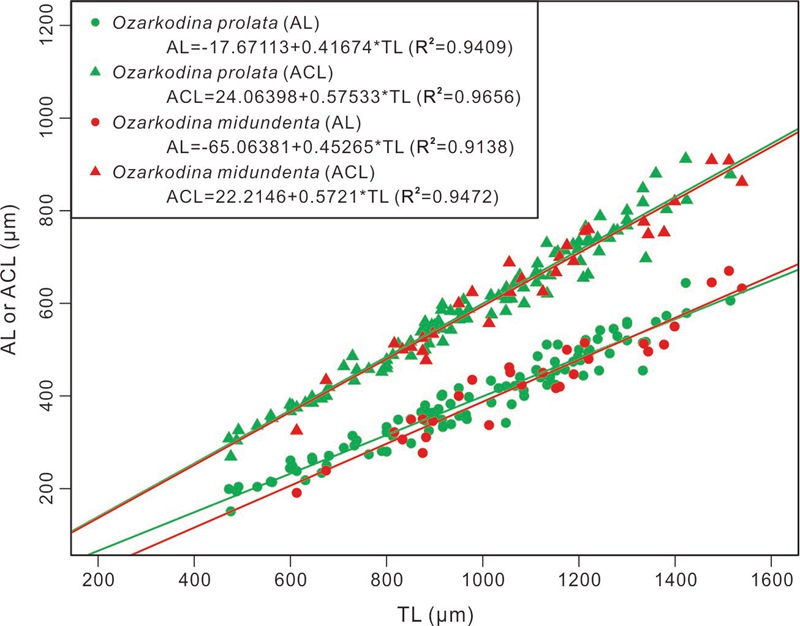Investigations of Emsian conodonts from Bahe, Liujing and Daliantang sections in South China yielded abundant collections of Ozarkodina prolata Mawson, 1987 and O. midundenta (Wang and Ziegler, 1983). Initially named Pandorinellina exigua midundenta by Wang and Ziegler (1983) without any information regarding the Sa element of the apparatus by which Pandorinellina mainly differs from Ozarkodina, midundenta is re-assigned back to Ozarkodina and raised to species level herein. Based on morphological analysis of O. prolata and O. midundenta, it seems plausible that the latter developed from the former by progressive fusion of denticles in the middle third of the blade above the basal cavity in the Pa element.
Related information: Lu Jianfeng, 2016. Morphological analysis of Ozarkodina prolata Mawson and Ozarkodina midundenta (Wang & Ziegler) (Emsian conodonts) from South China. Alcheringa, 40(1): 129-146.

Scatter diagram showing the relationship between total length of the unit (TL) and length of anterior blade (AL) or length of anterior blade together with basal cavity area (ACL) in Ozarkodina prolata Mawson, 1987 and Ozarkodina midundenta (Wang & Ziegler, 1983)
